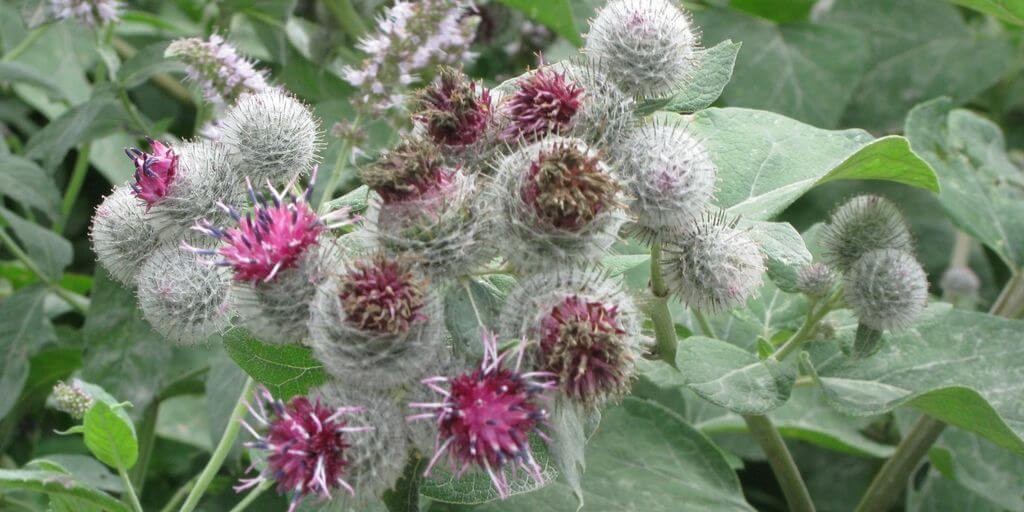BURDOCK
Scientific name: Arctium lappa, Arctium minus, Arctium spp.
Common names: Hill, Lappa, Thorny Burr, Arctium, Arctium tomentosum, Bardana, Bardana-minor, Bardanae Radix, Bardane, Bardane Comestible, Bardane Géante, Bardane Majeure, Beggar’s Buttons, Burdock Root Extract, Burr Seed, Cocklebur, Cockle Buttons, Edible Burdock, Fox’s Clote, Gobo, Glouteron, Grande Bardane, Great Bur, Great Burdocks, Happy Major, Hardock, Harebur, Herbe aux Teigneux, Herbe du Teigneux, Lappa, Love Leaves, Niu Bang Zi, Orelha-de-gigante, Personata, Philanthropium, Rhubarbe du Diable
Habitat: The burdock plant is commonly found in waste lands and along roadsides; it can grow up to a height of 5 feet. Usually wherever nettle is found, so is burdock.
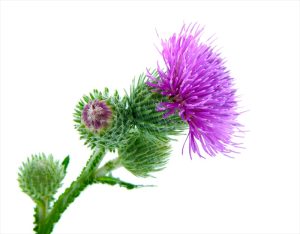
Features: The stem is stout with wide spreading branches with heart-shaped leaves. It carries purple flowers that blooms in July and August. The root is thick, brownish-grey externally, whitish inside. Roots and seeds have a sweetish, slimy taste, the leaves and stems are bitter.
Nutrient and Mineral Composition
Minerals – including potassium, iron, manganese, magnesium; and small amounts of zinc, calcium, selenium, and phosphorus.
Vitamins – including folic acid, riboflavin, pyridoxine, niacin, vitamin E, and vitamin C.
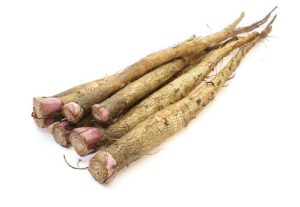
Action
Alterative (Root and Herb), Diuretic and Diaphoretic.
– root and herb (alterative)
– seeds (affect kidneys)
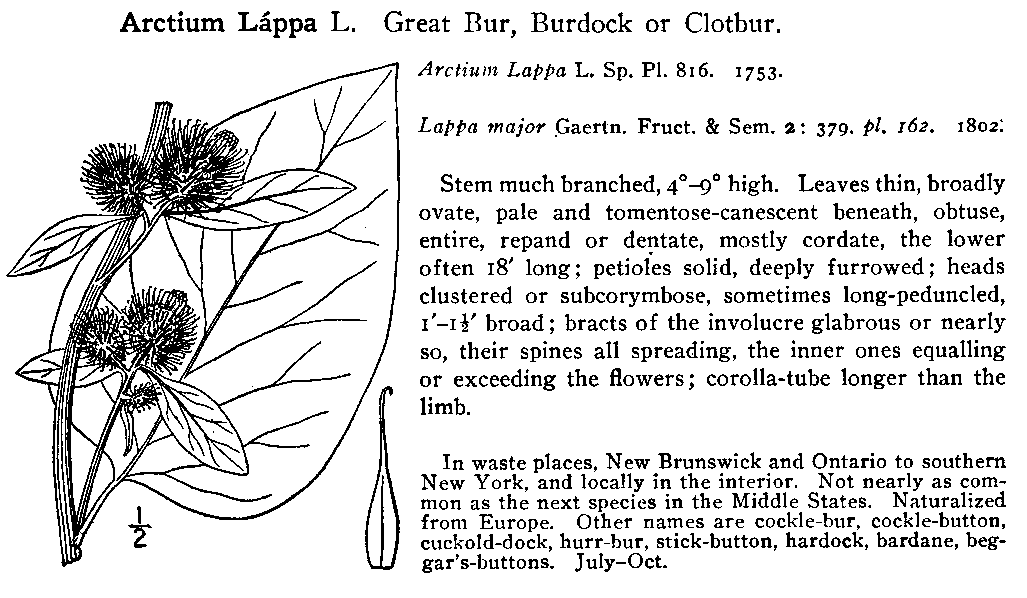
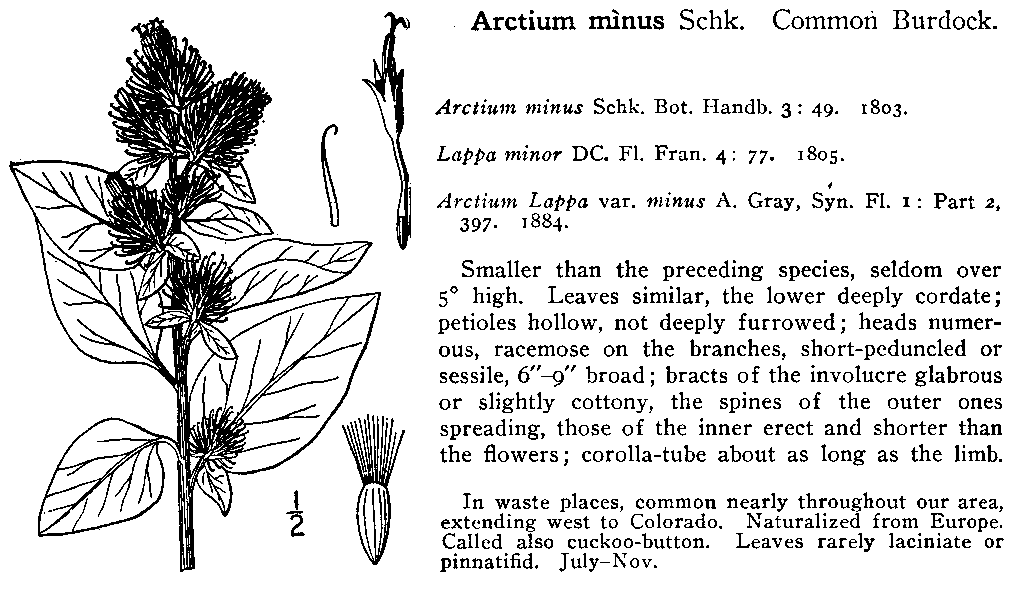
Uses
- Good source of non-starch polysaccharides such as inulin, glucoside-Lappin and mucilage which act as a laxative.
- Inulin acts as prebiotic and helps reduce body weight, and the blood sugar and cholesterol levels.
- The blood purifying property helps to clear the bloodstream of toxins, heavy metals, improve blood circulation to the surface or the skin and whole body.
- Natural diuretic – help eliminate excess water and sodium by increasing urine output. It is known to stimulate the kidney to instigate removal of waste from the body.
- Strengthens the lymph system.
- Has vitamin C and E which are powerful antioxidants which help the human body fight cancer, infections and neurologic conditions.
- Edema/ Fluid Retention – good for issues such as fluid retention/edema
- Skin health – topical remedy for skin issues including acne, eczema (dermatitis), psoriasis, burns, dry skin and anti-aging.
Burdock is considered an extremely effective blood purifying plant. As a prime blood cleanser it will clear the skin, bloodstream, lymph, and colon of poisons. It is best used in combination with dandelion to safeguard the elimination of collected toxins.
The root and seed of burdock make a soothing demulcent, tonic, alterative; it slowly but steadily cleanses skin, soothes the kidneys, and relieves the lymphatics; eliminates boils, carbuncles, canker sores, styes, felons, etc. Burdock soothe the mucous membrane throughout the entire system. It is also used as a kidney cleanser, it aids digestion, stimulates appetite, treat eczema and respiratory tract problems. It is used for its anti-bacterial and anti-microbal properties.
Burdock is also used for gout, rheumatism, scrofula, syphilis, sciatica, gonorrhea, and kidney diseases. It is best combined with more stimulating agents.
Food Use
The young burdock plant is eaten as a root vegetable. Burdock roots, shoot and leaves are all edible. It is said to taste very good in stir-fries, or slow-roasted or grilled. The peeled first-year stalk is also eaten, having a taste similar to celery.
Burdock contains inulin
Burdock root contains inulin, a type of beneficial fibre with numerous positive health effects. Most of these health benefits are linked to the ability of inulin fibre to promote the growth of bifidobacteria in the large intestine. Bifidobacteria are health promoting microbes that are naturally present in the gut.
Part used
Root, seeds and the herb itself are used.
Dosage
Recommended dosages (adults) given below are based on traditional uses referenced in contemporary and older herbal reference literature.
Infusion: Dried root 2–6 g by infusion three times daily.
Liquid extract: BHC Vol 1 (root). 1:1, 25 per cent ethanol. Dose: 2-6ml, three times daily.
Tincture: BHC Vol 1 (root). 1:5, 25 per cent ethanol. Dose: 8-12ml.
Powder: Two 250mg capsules with meals.
Compress (topical): 2 teaspoons shredded root or powder to two cups water simmered 5 minutes and allowed to stand for 30 minutes; saturate piece of suitable material and apply.
Source(s):
The Complete Home Guide to Herbs, Natural Healing, and Nutrition Jill Rosemary Davies
Herbal Medicines Third Edition, Joanne Barnes, Linda A Anderson, J David Phillipson
PDR for Herbal Medicines by Joerg Gruenwald, PhD etal
Bartram’s Encyclopedia of Herbal Medicine, Thomas Bertram
http://www.swsbm.com/
The information provided here are for educational purposes only, and is meant to help users better understand health concerns. This information should not be interpreted as specific medical advice. Users should consult with a qualified healthcare provider for specific questions regarding therapies, diagnosis and/or health conditions, prior to making therapeutic decisions.
This article is copyrighted by Ital is Vital, 2025. Want to re-post this article? Visit our guidelines.
DISCLAIMER: THIS WEBSITE DOES NOT PROVIDE MEDICAL ADVICE
The information, including but not limited to, text, graphics, images and other material contained on this website are for informational purposes only. The purpose of this website is to promote broad consumer understanding and knowledge of various health topics. It is not intended to be a substitute for professional medical advice, diagnosis or treatment. Always seek the advice of your physician or other qualified health care provider with any questions you may have regarding a medical condition or treatment and before undertaking a new health care regimen, and never disregard professional medical advice or delay in seeking it because of something you have read on this website.
